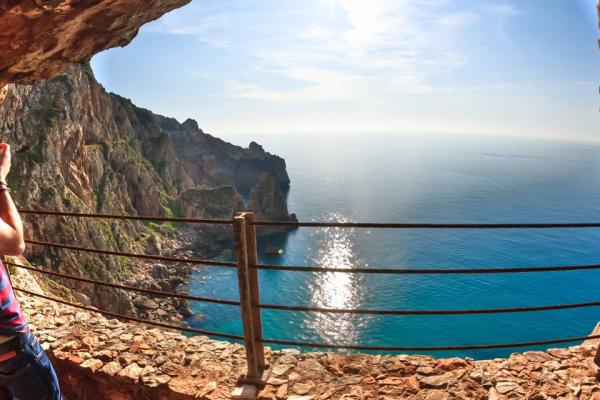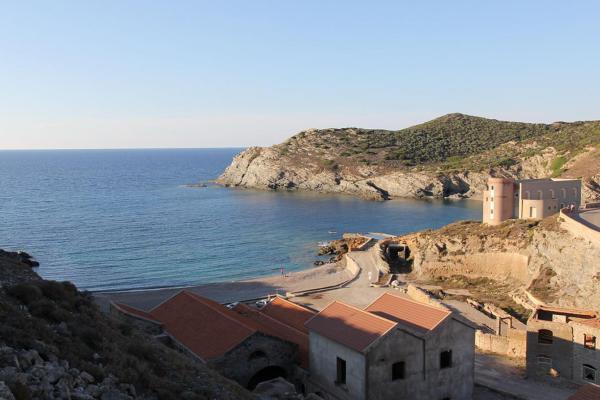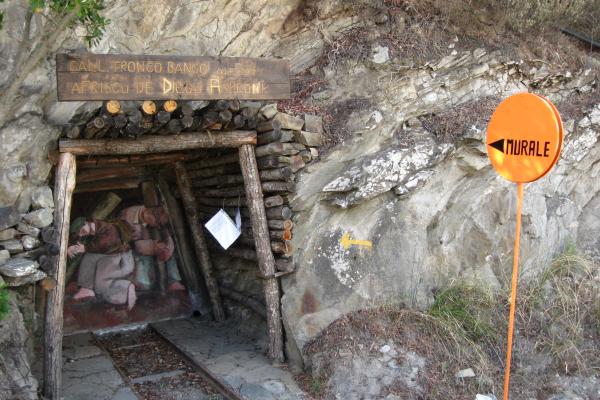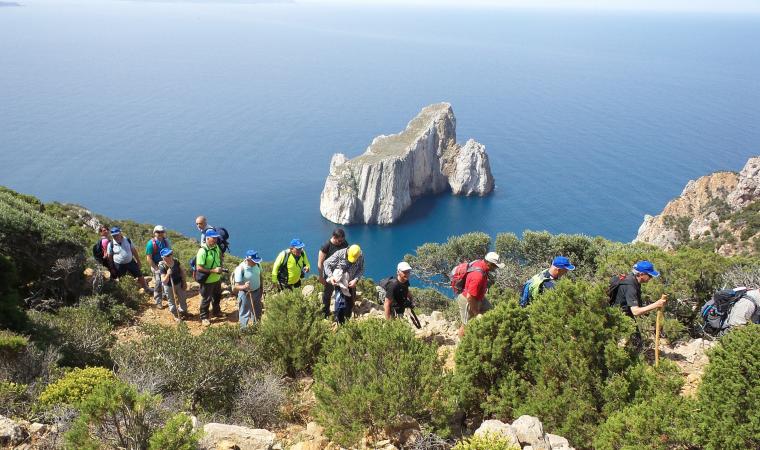
The 'Island of silver veins', as it was called by ancient peoples and merchants. You can feel it just by looking at it and walking on it: this is an ancient land that has imprisoned the most precious materials over geological eras. Thus fate would have it that, until the end of the 20th century, hundreds of shafts and tunnels were dug, arduous work carried out by thousands of Sardinian miners in bleak and fraught environments, at the cost of their health and their very lives. The great mining epic did not leave behind economic prosperity but rather an immense heritage of industrial archaeology set in Sardinia's most unusual landscapes. Mines that were once teeming with frenzied activity inside and outside the tunnels, are now the custodians of the tears shed in the darkness by generations of workers, some of whom have become specialised tourist guides to reveal the profound meaning of these places of work, both painful and enchanting at the same time. Crags, sand dunes, karst cavities, wild forests and the blue sea form the backdrop to eight mining areas that together form Sardinia's geo-mineral park, an outstanding part of the UNESCO world network of geoparks for its extraordinary industrial facilities and the timeless charm of the landscapes of which the abandoned mines have become a part.
Galleria Henry, a window on the sea of Buggerru
When the sun is high, it travels west to reach the opposite coast of the island. At sunset, the quartz crystals of is Arutas and the soft white sand of San Giovanni di Sinis, the enchanting Scivu and the inimitable dunes of Piscinas, together with the monuments of industrial archaeology overlooking the sea in Sardinia's geo-mineral park, become fantastic backdrops for colourful dreamy sunsets, which seem endless in these parts.
Pan di Zucchero in the water, Porto Flavia in the mountains
Porto Flavia began as a system of overlapping tunnels dug into the mountain and used to transport ore from the shafts to the ships at anchor in the Pan di Zucchero roadstead, which is also overlooked by the Masua mine. Today it is a fascinating journey through the ingenuity of its designers, a project that was futuristic in its time. Just the view of the loading terrace from the sea is a thrill, and the same is true in Nebida in front of the imposing Lamarmora washery. Beautiful as can be, they bear witness to the hard work of men and women.
Beyond Piscinas, the ghosts of Montevecchio and Ingurtosu
Thousands of miners down the shafts digging in the darkness of the mines, while on the surface the bosses, alongside engineers, doctors and craftsmen, brought life to the community with their families. The bosses lived in princely villas where they lived in luxury, elbow to elbow with the meagre life of the miners. A large village with a hospital, cemetery, schools, church and squares where civil life existed alongside the frenetic exploitation of the shafts until they were abandoned. They had nothing else to give.
Energy reserve for Italy, and Carbonia was born
The endless coal deposits of Sulcis were the great national energy dream, soon to vanish. The struggles and strikes in defence of work were futile, and the Carbonia mine was closed, as was the impressive Serbariu mine, which houses the Coal Museum, where you can relive the moods and rhythms of underground life, and the Rosas mines, now an open-air museum of industrial archaeology, in the countryside near Narcao. The converted miners' village cottages and guest quarters are now a place of welcome and hospitality with an original flavour.
Argentiera, the far west of Sardinia
A hidden mining village far from any towns, but surrounded by beaches with reflections of silver from the sea. At the centre of the village is the mine and, along with it, all the stories of blood, sweat and tears it brought with it. Now it is a hamlet of Sassari inhabited by a few residents and a curious location for exhibitions and performances. The old village of stone and wood perched on the mountainside, with an unparalleled view of the northern sea, is waiting to be restored to its former glory, from a time when silver routes were sought here.
Deep in Barbagia, Funtana Raminosa
The sea is far away from here, a rarity for Sardinia's mines, which usually face the coast. We can imagine that it was not easy to transport ores from the mines at the bottom of the Barbagia valley to the ships. But its name says it all (Funtana Raminosa can be loosely translated to ‘Font of Copper’): it provided plenty of copper back in the days of the Nuraghi and then made the fortune of the Phoenicians, Romans and merchants of all ages. The bounty of the deposit drove the ambitions of European and even US companies until it was abandoned in 1983. A new life awaits it in the hands of the former miners, now passionate guides to help visitors discover their mine.
Sos Enattos, a balance between memories, nature and science
Its veins have been exploited for thousands of years, first for soapstone and then for extracting lead, silver and zinc. Today, silence reigns here and you will find yourself gazing at the enchanting landscape that surrounds you, with Mount Albo in the background and lush woods all around. Times seems to have been standing still here since the last day of mining activity: wells, washeries, warehouses and offices seem to be waiting eternally for the managers and miners to arrive. In reality, the past and the future coexist as if by magic and, instead of digging for minerals, the search for gravitational waves takes place in the innovative SAR-GRAV laboratory.











